Hello Yoga – the simplest form of yoga
Hello Yoga, the simplest form of yoga designed for beginners. Immerse yourself in gentle movements, mindful breathing, and easy poses,
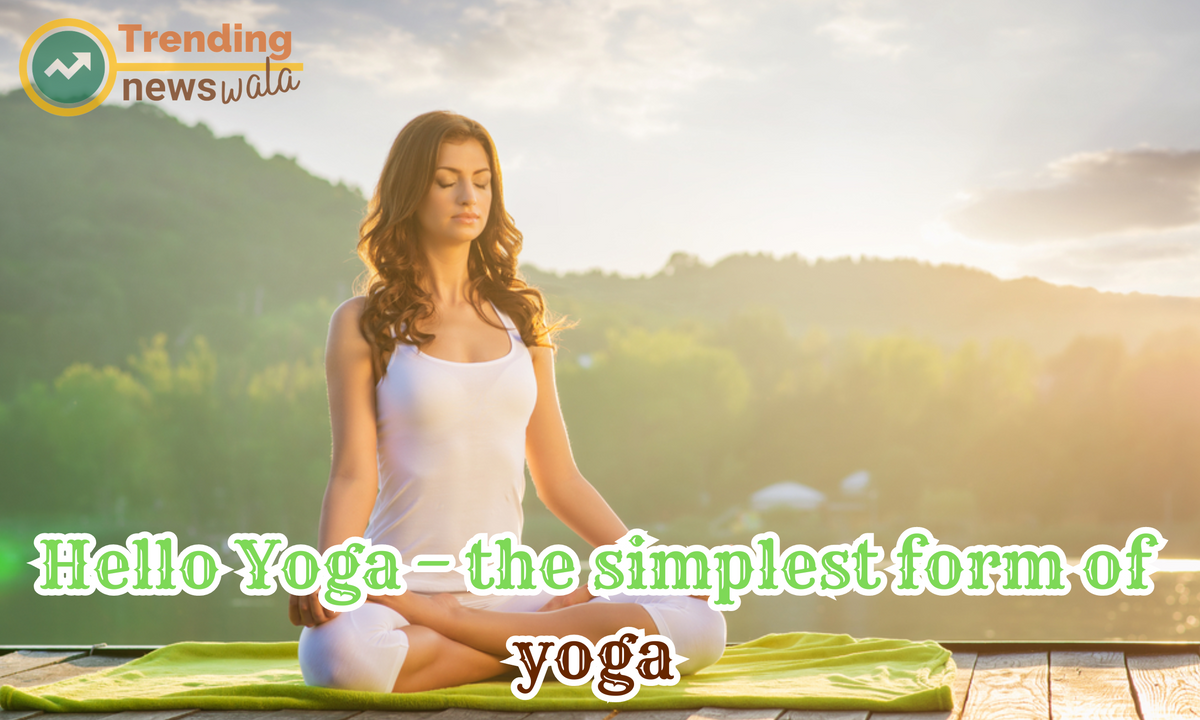
In the bustling world we inhabit, finding solace in simplicity is a pursuit worth undertaking. "Hello Yoga," a term coined to embrace the simplest form of yoga, beckons individuals to reconnect with the essence of this ancient practice. Stripping away complexities, Hello Yoga is an invitation to embark on a journey of self-discovery, mindfulness, and holistic well-being.
In a world that often glorifies complexity, Hello Yoga stands as a testament to the power of simplicity. By embracing basic poses, mindful breathing, and a relaxed approach, individuals can experience the transformative benefits of yoga without unnecessary intricacies. Hello Yoga extends a warm invitation to reconnect with the essence of yoga, fostering a journey of self-discovery and holistic well-being
Accessible to All
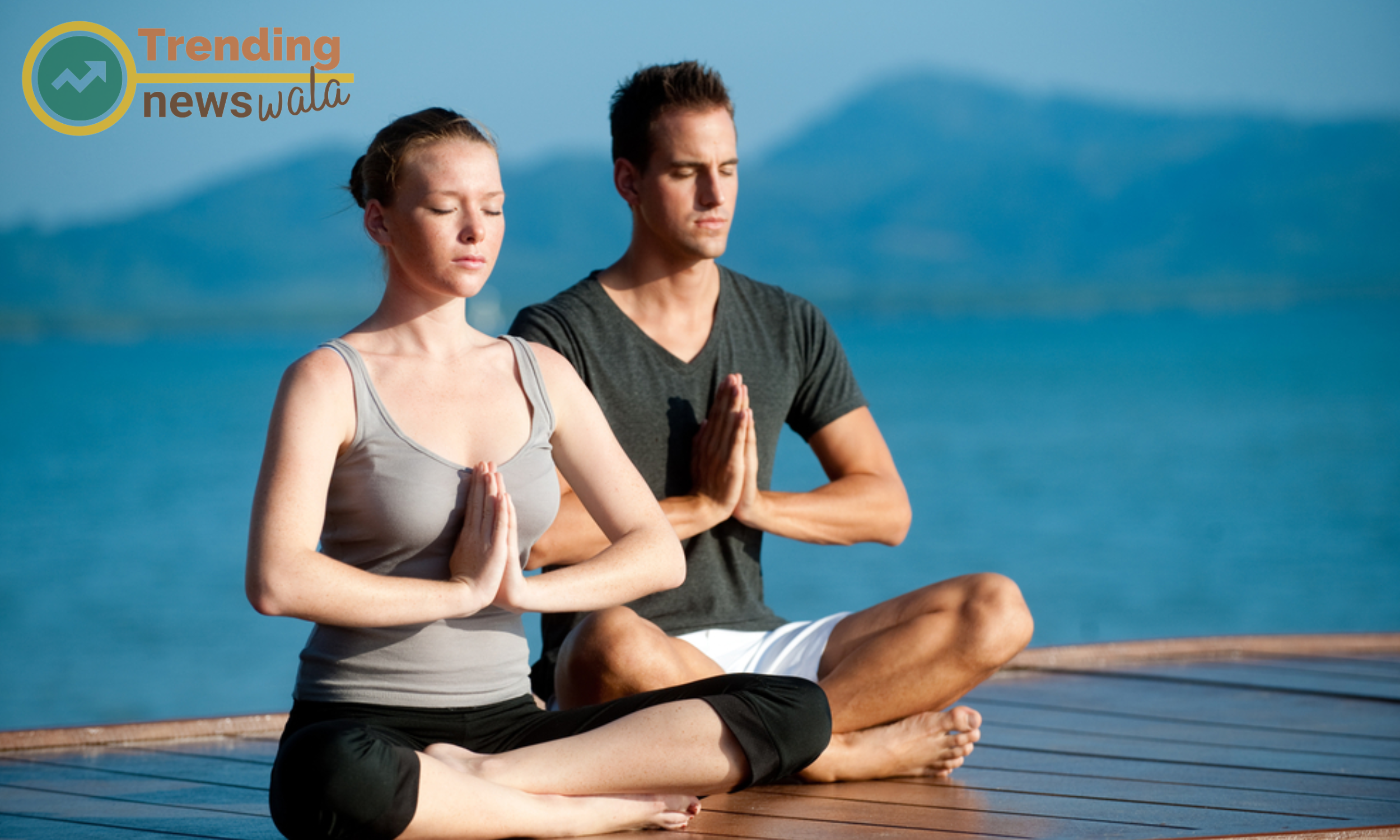
Hello Yoga stands out for its inclusivity. It is designed to be accessible to individuals of all ages, fitness levels, and backgrounds. Whether you're a beginner or an experienced yogi, Hello Yoga provides a welcoming entry point into the world of yoga.
Simplified Poses: Hello Yoga focuses on basic yoga poses, keeping them simple and approachable. These fundamental poses are carefully selected to cater to individuals who may be new to yoga, making it easier for them to learn and practice without feeling overwhelmed.
Adaptability: The beauty of Hello Yoga lies in its adaptability. Whether you're a beginner or an experienced yogi, Hello Yoga accommodates practitioners at different stages of their yoga journey. The emphasis on simplicity allows individuals to modify poses based on their comfort and ability.
No Age Restrictions: Hello Yoga has no age restrictions. It is suitable for children, teenagers, adults, and seniors alike. The simplicity of the poses makes it accessible to individuals of all generations, promoting a holistic approach to well-being.
No Special Equipment Required: Unlike some forms of yoga that may require props or specialized equipment, Hello Yoga can be practiced with minimal or no additional tools. This makes it cost-effective and ensures that individuals can practice yoga without the need for extensive gear.
Anywhere, Anytime: One of the key aspects of accessibility is the flexibility of practice. Hello Yoga can be done anywhere and at any time, allowing individuals to integrate it into their daily lives. Whether at home, in a park, or even in a workplace, Hello Yoga fits seamlessly into various environments.
No Previous Yoga Experience Needed: You don't need to be an experienced yogi to practice Hello Yoga. The simplicity of the poses and the focus on mindful breathing make it an excellent starting point for those who are new to yoga. It serves as a gateway for individuals to explore and gradually deepen their yoga practice.
Inclusive Language and Instruction: Hello Yoga instructors often use inclusive language and provide clear instructions that cater to a diverse audience. This ensures that everyone, regardless of their background or level of familiarity with yoga, feels comfortable and included during the practice.
Emphasis on Comfort: Hello Yoga places a strong emphasis on comfort. Practitioners are encouraged to listen to their bodies, modify poses as needed, and progress at their own pace. This approach minimizes the risk of strain or discomfort, fostering a positive and enjoyable experience.
Promotion of Body Positivity: Hello Yoga promotes body positivity by celebrating the uniqueness of every individual. It encourages self-acceptance and discourages unrealistic expectations, creating a non-judgmental space for practitioners to connect with their bodies.
Community Support: Accessible yoga often thrives within supportive communities. Hello Yoga practitioners and instructors create an environment that encourages questions, provides guidance, and fosters a sense of belonging for individuals at all levels of practice.
By embodying these principles of accessibility, Hello Yoga aims to make the transformative benefits of yoga available to everyone, fostering a diverse and inclusive community of practitioners.
Basic Asanas (Poses)
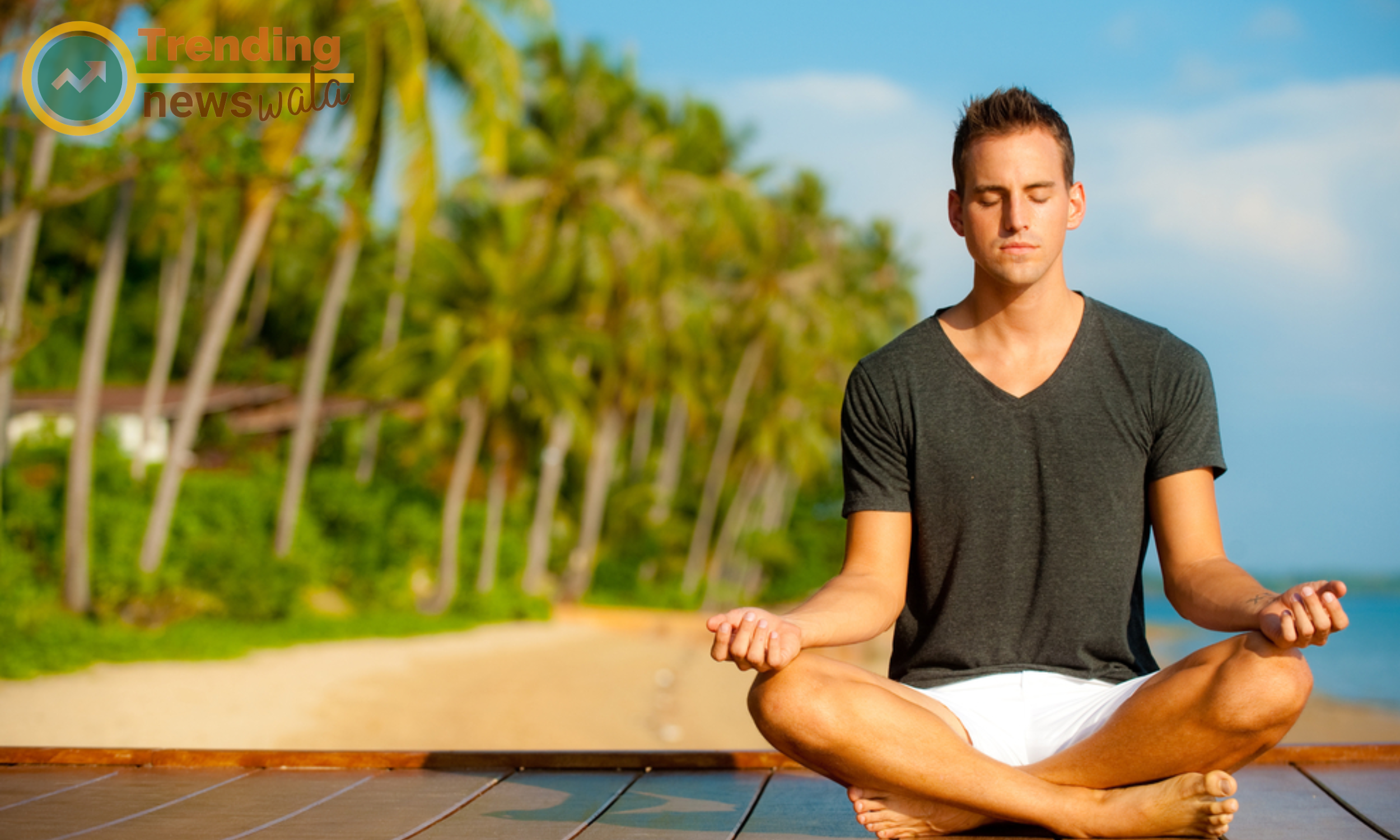
At the heart of Hello Yoga are fundamental yoga poses that focus on balance, flexibility, and breath awareness. These basic asanas serve as building blocks, offering a solid foundation for those new to yoga while allowing experienced practitioners to revisit the simplicity of their practice.
Basic asanas, or yoga poses, are fundamental postures that form the foundation of any yoga practice, including Hello Yoga. These poses focus on building strength, flexibility, and balance while promoting mindfulness and relaxation. Here are more details on some common basic asanas in Hello Yoga:
Tadasana (Mountain Pose):
- Stand with feet together, arms by the sides, and weight evenly distributed on both feet.
- Engage the thighs, lift the chest, and reach the arms overhead with palms facing each other.
- Tadasana promotes grounding and encourages proper posture.
Balasana (Child's Pose):
- Kneel on the mat, sit back on the heels, and extend the arms forward with palms resting on the mat.
- This resting pose stretches the spine, hips, and shoulders, providing a gentle release of tension.
Adho Mukha Svanasana (Downward-Facing Dog):
- Start on hands and knees, tuck toes, and lift the hips toward the ceiling.
- Keep a straight line from wrists to hips and hips to heels.
- Downward-Facing Dog strengthens the arms and legs while stretching the back and hamstrings.
Uttanasana (Forward Fold):
- Stand with feet hip-width apart, hinge at the hips, and reach towards the floor.
- Allow the spine to lengthen and the head to relax.
- Uttanasana stretches the hamstrings, back, and promotes relaxation.
Marjarasana (Cat-Cow Pose):
- Begin on hands and knees with a neutral spine.
- Inhale, arch the back (Cow Pose), and look up.
- Exhale, round the back (Cat Pose), and tuck the chin to the chest.
- Cat-Cow promotes flexibility and mobility in the spine.
Virabhadrasana I (Warrior I Pose):
- Step one foot forward into a lunge, extend the arms overhead, and square the hips forward.
- The back foot is angled slightly outward.
- Warrior I builds strength in the legs, stretches the hips, and promotes focus.
Sukhasana (Easy Pose):
- Sit comfortably on the mat with crossed legs.
- Keep the spine tall and rest the hands on the knees.
- Sukhasana is a simple seated pose promoting grounding and ease.
Bhujangasana (Cobra Pose):
- Lie on the stomach, place hands under the shoulders, and lift the chest while keeping the pelvis on the mat.
- Cobra Pose strengthens the back muscles and opens the chest.
Vrikshasana (Tree Pose):
- Stand on one leg, place the sole of the other foot on the inner thigh or calf, and balance.
- Bring palms together in front of the chest.
- Tree Pose improves balance, focus, and strengthens the legs.
Savasana (Corpse Pose):
- Lie on the back with legs extended and arms by the sides, palms facing up.
- Close the eyes and focus on deep, mindful breathing.
- Savasana is a relaxation pose that allows the body to integrate the benefits of the practice.
These basic asanas in Hello Yoga form a well-rounded set of poses that cater to individuals at various skill levels. They serve as a foundation for more advanced postures, offering practitioners the opportunity to build strength, flexibility, and mindfulness in a simple and accessible manner. It's important to approach each pose with awareness, listen to the body, and modify as needed for individual comfort and capability.
Breath-Centric Practice
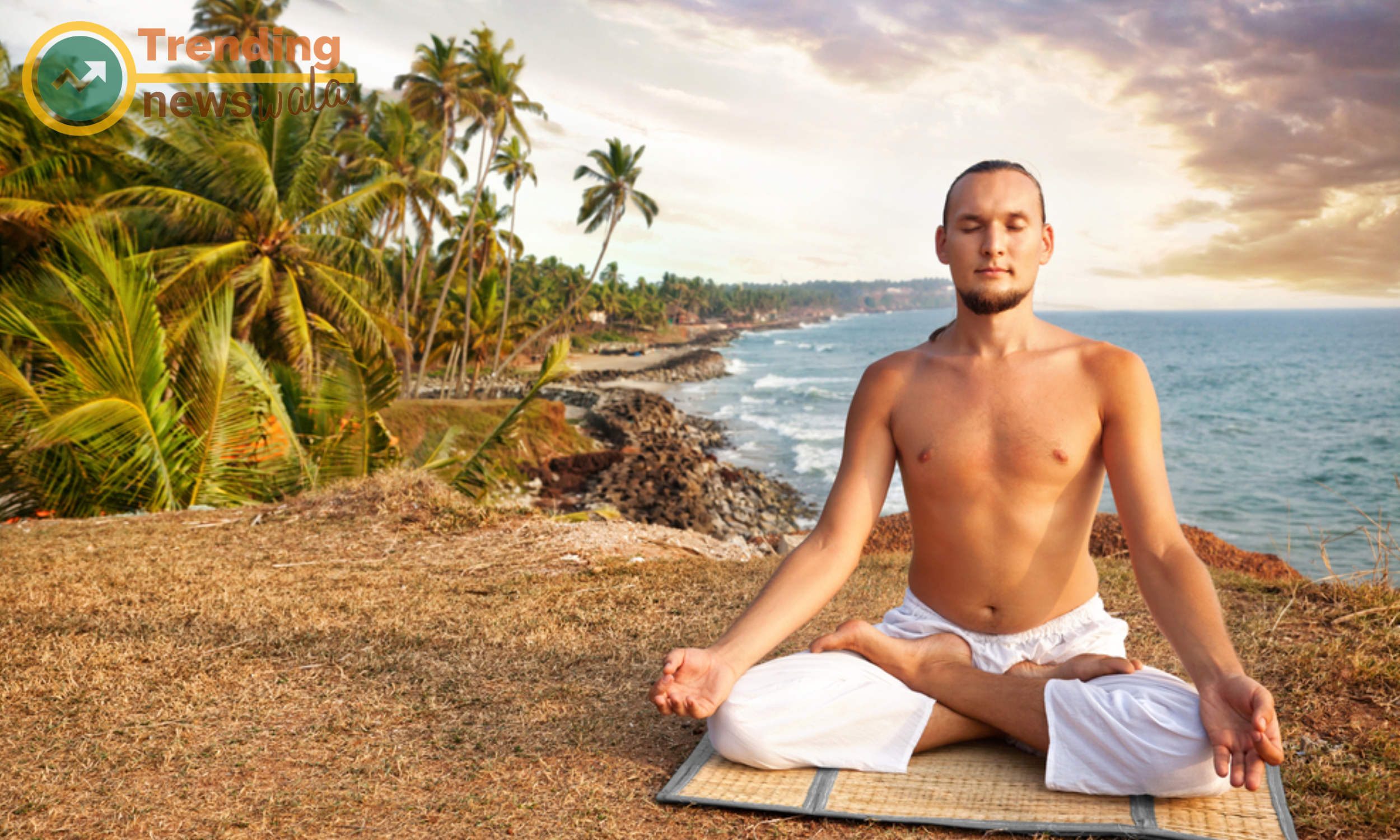
The essence of Hello Yoga lies in the synchronization of breath and movement. Conscious breathing techniques, such as diaphragmatic breathing and mindful inhalations/exhalations, infuse the practice with a meditative quality, promoting relaxation and stress reduction.
A breath-centric practice in yoga places a profound emphasis on mindful and intentional breathing throughout the entire yoga session. This approach recognizes the vital connection between breath, movement, and mental focus. Here are more details on a breath-centric practice:
Conscious Breathing: Breath-centric practice involves bringing conscious awareness to the breath. Instead of allowing the breath to be automatic, practitioners intentionally guide the breath, creating a deeper connection with each inhalation and exhalation.
Ujjayi Breathing: Often incorporated in breath-centric practices, Ujjayi breathing involves inhaling and exhaling through the nose while slightly constricting the back of the throat. This creates a soft, audible sound, enhancing the awareness of the breath and promoting a meditative state.
Synchronization with Movement: In a breath-centric practice, each movement is synchronized with the breath. Movements are initiated or concluded with specific phases of the breath cycle, fostering a seamless integration of breath and motion.
Enhanced Mind-Body Connection: By centering the practice around the breath, individuals cultivate a heightened awareness of the mind-body connection. This mindful approach encourages practitioners to be fully present in each moment, fostering a sense of
Balancing the Nervous System: Conscious breathing, particularly practices that emphasize extended exhales, can activate the parasympathetic nervous system, promoting relaxation and reducing stress. This balance is essential for overall well-being.
Pranayama Techniques: Breath-centric practice often incorporates pranayama, or breath control, techniques. This can include practices like Nadi Shodhana (alternate nostril breathing), Kapalabhati (breath of fire), and Bhramari (humming bee breath), each serving specific purposes in enhancing breath awareness and energy flow.
Mindful Transitions: Breath-centric yoga encourages practitioners to maintain a conscious breath even during transitions between poses. This mindful approach ensures a smooth flow between movements, preventing breath-holding and promoting a sense of ease.
Regulating the Pace: The pace of a breath-centric practice is often intentional and controlled. Slowing down the breath and movements allows for a more meditative experience, fostering a deeper connection between the breath and the body.
Awareness of Breath Quality: Practitioners pay attention not only to the rhythm of the breath but also to its quality. Is the breath smooth, deep, and steady? By refining the quality of the breath, individuals enhance their overall yoga experience.
Promoting Mindfulness Off the Mat:- The breath-centric approach extends beyond the yoga mat, encouraging practitioners to carry the mindfulness gained through conscious breathing into their daily lives. This integration supports stress management, emotional balance, and overall resilience.
A breath-centric practice is not only a physical exercise but also a holistic approach to well-being. By making the breath a focal point, individuals can tap into the transformative power of mindfulness, promoting balance, relaxation, and a deeper connection with oneself.
Mindful Awareness
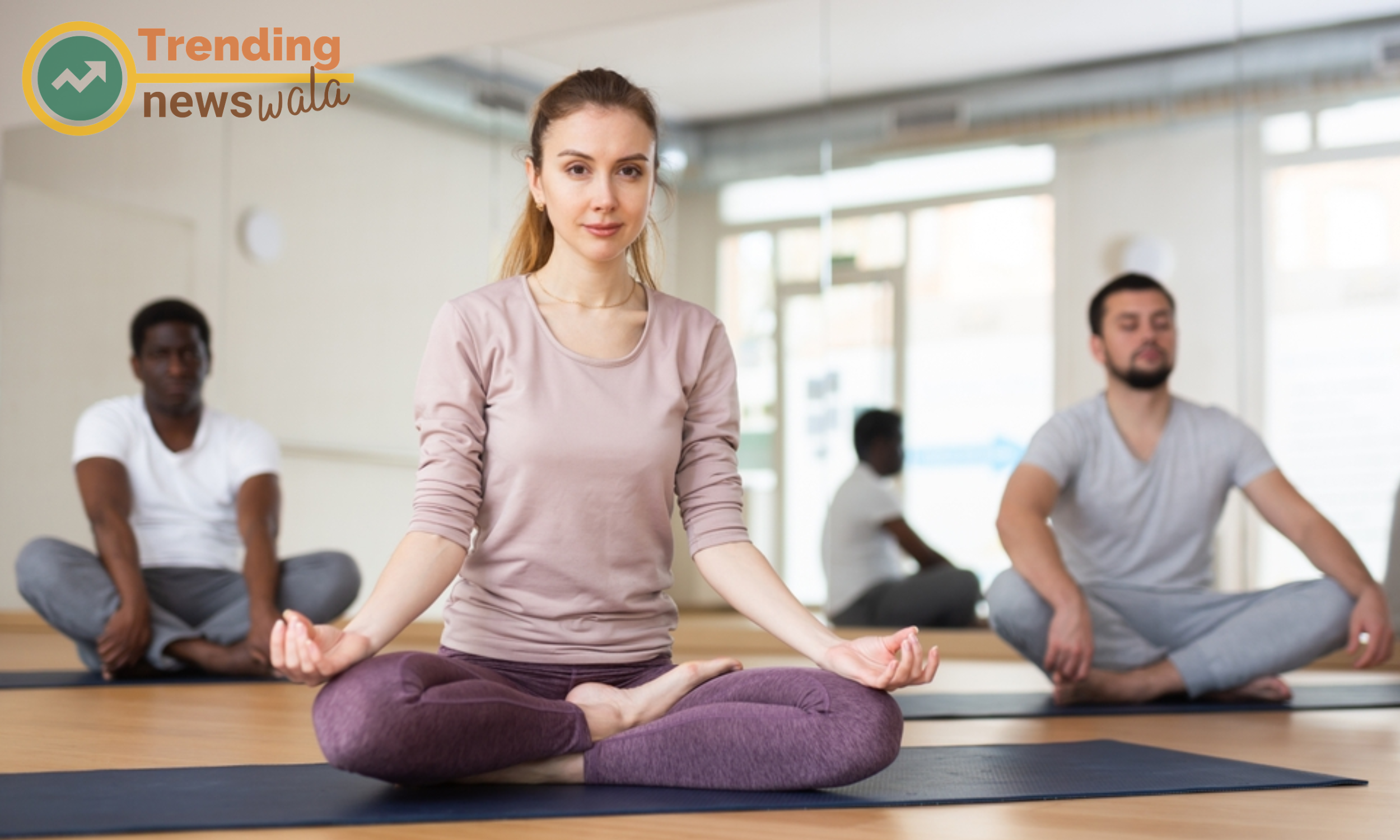
Hello Yoga encourages practitioners to cultivate mindful awareness during each pose. By directing attention to the present moment and the sensations within the body, individuals can experience a profound sense of grounding and tranquility.
Mindful awareness is a state of intentional and non-judgmental attention to the present moment. It involves cultivating an acute awareness of one's thoughts, feelings, bodily sensations, and the surrounding environment. Mindful awareness is a key component of various practices, including mindfulness meditation and yoga. Here are more details on mindful awareness:
Present-Moment Focus: Mindful awareness directs attention to the current moment without dwelling on the past or anticipating the future. Practitioners observe thoughts and sensations as they arise in the present, fostering a heightened sense of consciousness.
Body Scan Meditation: A body scan meditation is a common practice in mindful awareness. Practitioners systematically bring attention to different parts of the body, noting sensations without attachment or aversion. This promotes a deep connection between the mind and body.
Cultivating Mindful Presence: Mindful awareness is about being fully present in each moment. Whether engaging in routine activities or facing challenges, individuals cultivate mindful presence by paying attention to their thoughts, emotions, and actions as they unfold.
Acceptance of Thoughts and Emotions: Rather than resisting or suppressing thoughts and emotions, mindful awareness involves accepting them as they arise. This acceptance allows for a more balanced and compassionate response to the ups and downs of life.
Mindful Eating: Mindful awareness extends to daily activities, including eating. Practitioners engage in mindful eating by paying attention to each bite, savoring flavors, and being fully present during the meal. This promotes a healthier relationship with food.
Breath Awareness in Yoga: In yoga, mindful awareness is often integrated with breath awareness. Practitioners pay attention to the breath during each pose, cultivating a deep connection between breath and movement. This enhances the overall mind-body experience.
Observing External Stimuli: Mindful awareness isn't limited to internal experiences. It extends to the external environment, fostering an observant and appreciative awareness of sights, sounds, and sensations in the surrounding world.
Stress Reduction and Resilience:- Engaging in mindful awareness practices has been associated with stress reduction and increased resilience. By being fully present and non-reactive to stressors, individuals can navigate challenges more effectively.
Mindful Listening:- Mindful awareness extends to interpersonal interactions, including mindful listening. This involves giving full attention to the speaker without interrupting, allowing for a more meaningful and empathetic connection.
Integration into Daily Life:- Mindful awareness is not confined to formal meditation or yoga sessions. The goal is to integrate this state of awareness into everyday activities, promoting a continuous sense of presence and mindfulness.
Mindful awareness is a powerful tool for promoting mental well-being, emotional balance, and a deeper understanding of oneself and the world. By fostering this state of consciousness, individuals can cultivate resilience, reduce stress, and enhance their overall quality of life.
Minimalistic Approach
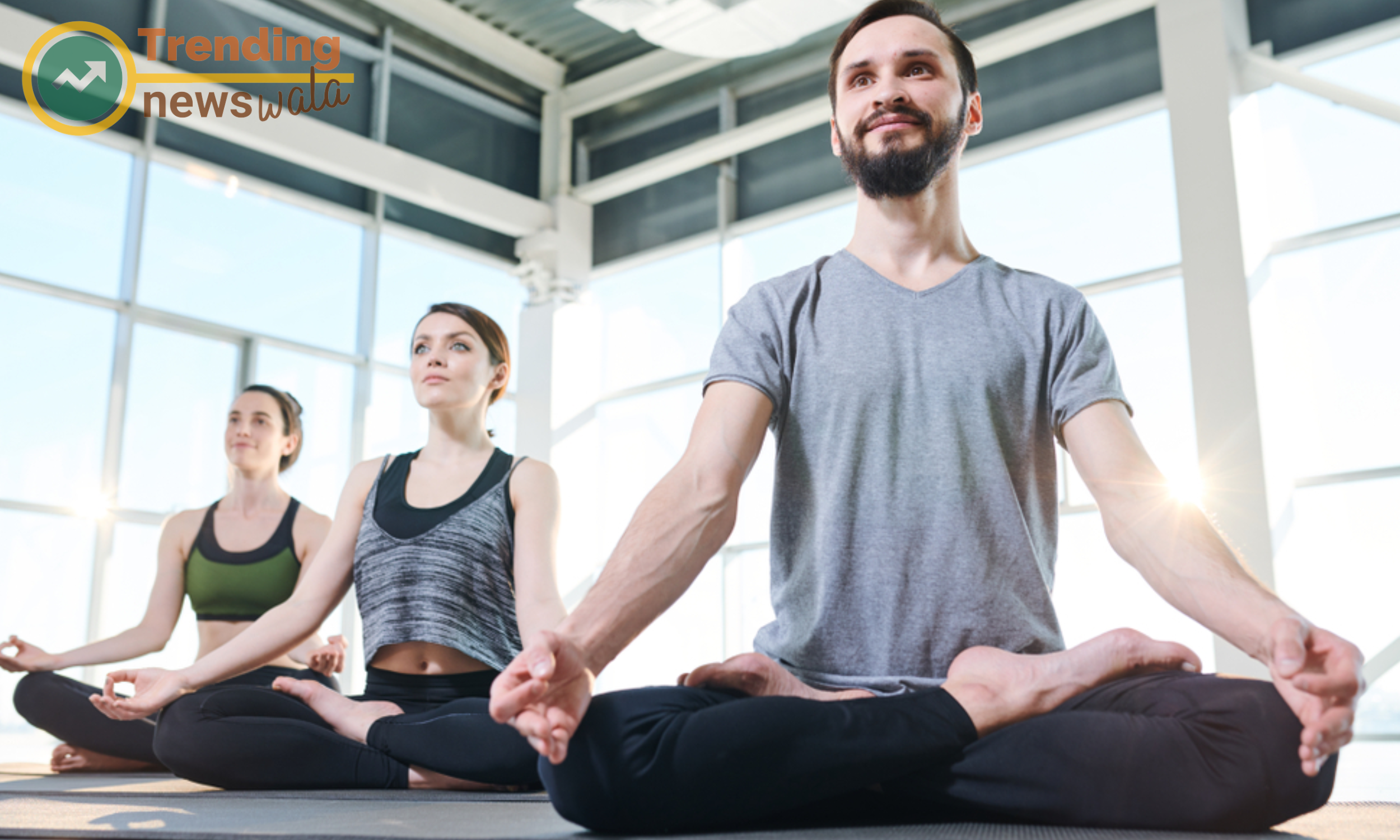
Unlike some yoga styles that incorporate intricate sequences, Hello Yoga adopts a minimalistic approach. The focus is on simplicity, allowing practitioners to connect with the core principles of yoga without feeling overwhelmed.
A minimalistic approach in yoga refers to simplifying the practice by focusing on essential elements, reducing complexity, and emphasizing the foundational aspects of yoga. This approach aligns with the philosophy that simplicity can enhance the depth and effectiveness of the practice. Here are more details on a minimalistic approach in yoga:
Simplified Poses: A minimalistic approach involves incorporating a select few yoga poses that cover a broad range of benefits. Rather than overwhelming the practice with numerous postures, practitioners focus on mastering a core set of poses to build strength, flexibility, and mindfulness.
Intentional Breathwork: Minimalistic yoga places a strong emphasis on intentional breathwork. Pranayama techniques, such as deep diaphragmatic breathing and Ujjayi breathing, are integrated to enhance the connection between breath and movement.
Mindful Awareness: Mindfulness is at the heart of a minimalistic approach. Practitioners are encouraged to cultivate mindful awareness of their breath, body, and thoughts throughout the practice. This intentional presence deepens the overall experience.
Functional Movement: The minimalistic approach often prioritizes functional movement over complex or acrobatic poses. Poses that mimic everyday movements and enhance overall mobility are emphasized, making the practice more accessible and applicable to daily life.
Reduced Use of Props: While props like blocks and straps can be valuable tools in yoga, a minimalistic approach may involve reducing reliance on props. This encourages practitioners to develop greater strength and flexibility without external support.
Shorter Sequences: Minimalistic yoga sequences are typically shorter and more focused. This allows practitioners to delve deeper into each pose and experience the full benefits without feeling rushed or overwhelmed.
Mindful Transitions: The transitions between poses are given special attention in a minimalistic approach. Practitioners move mindfully, paying close attention to the breath and maintaining awareness throughout the seamless flow between poses.
Emphasis on Quality Over Quantity: Instead of striving for a high number of poses or intricate sequences, the focus in minimalistic yoga is on the quality of each movement and posture. Practitioners aim for precision, alignment, and mindful engagement.
Accessible Modifications: Modifications and variations of poses are integrated into a minimalistic practice, making it accessible to practitioners of different levels. This approach encourages individuals to honor their bodies and adapt the practice to their unique needs.
Holistic Well-Being:- A minimalistic approach in yoga extends beyond physical postures. It includes practices that nurture mental and emotional well-being, such as meditation, mindfulness, and relaxation techniques.
Integration with Daily Life:- Minimalistic yoga is designed to seamlessly integrate with daily life. The principles learned on the mat are carried off the mat, promoting a sense of mindfulness and well-being throughout the day.
Encourages Regular Practice:- The simplicity of a minimalistic approach makes it more likely for individuals to establish and maintain a regular yoga practice. The accessibility of the practice encourages consistency and long-term engagement.
By embracing a minimalistic approach in yoga, practitioners can experience the profound benefits of simplicity. This approach resonates with the idea that depth and transformative power lie in the mindful and intentional exploration of the essential elements of yoga.
Improved Flexibility
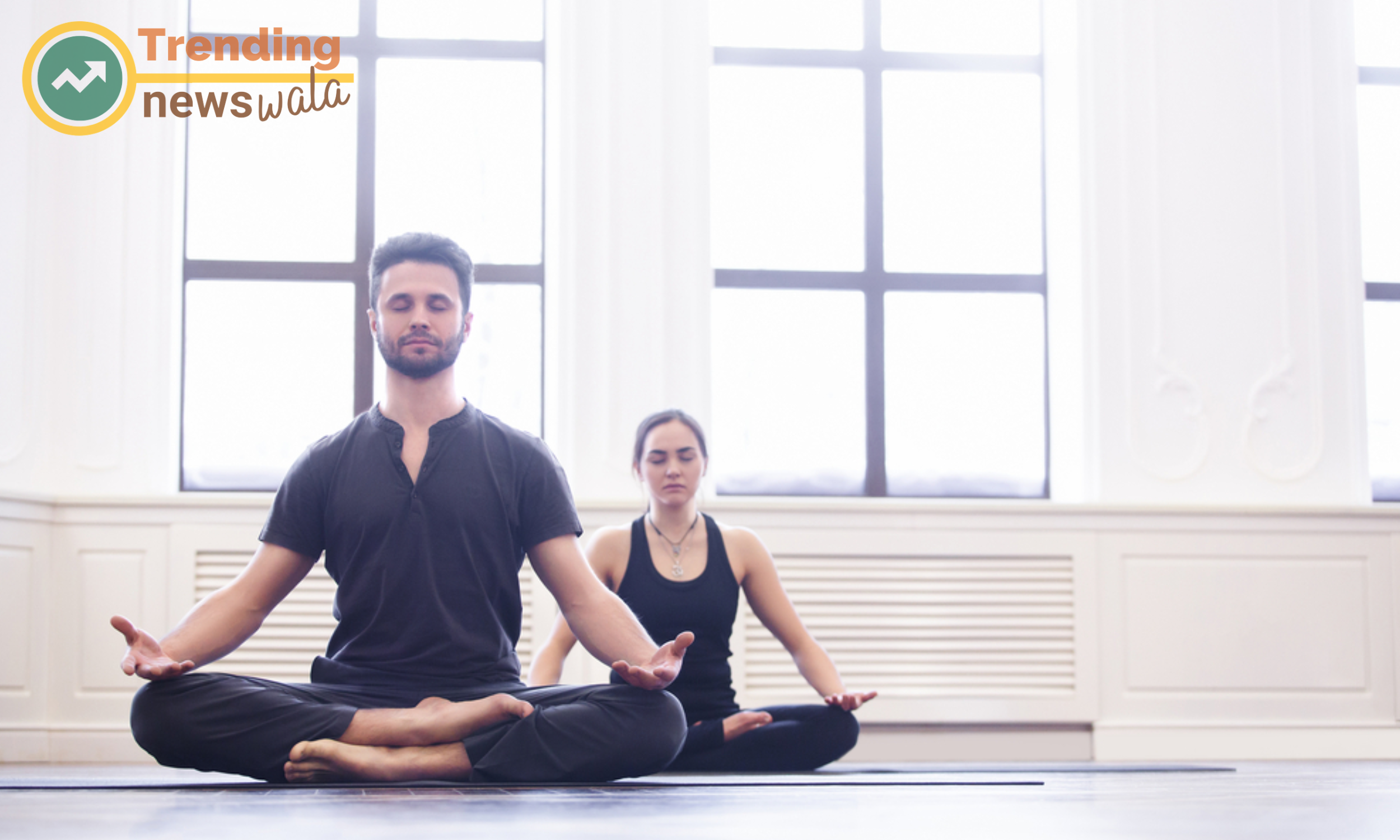
The beauty of Hello Yoga lies in its flexibility. It can be practiced anywhere, anytime, making it a versatile and convenient addition to busy lifestyles. Whether in the comfort of one's home, a serene outdoor setting, or even during a quick break at work, Hello Yoga adapts to your schedule.
Improved flexibility is a key benefit of yoga and is achieved through regular practice of various poses that target different muscle groups and joints. Flexibility refers to the range of motion in a joint or group of joints, and yoga is an effective way to enhance this quality. Here are more details on how yoga contributes to improved flexibility:
Dynamic Stretching: Yoga involves dynamic stretching, where muscles are lengthened and contracted through a full range of motion. This type of stretching helps improve flexibility by gradually increasing the extensibility of muscles and connective tissues.
Static Stretching: Holding yoga poses for an extended period involves static stretching. This allows muscles to lengthen and helps improve flexibility over time. Poses such as Forward Bend (Uttanasana) and Butterfly Pose (Baddha Konasana) contribute to static stretching.
Balanced Muscle Development: Yoga promotes balanced muscle development by working opposing muscle groups. This helps prevent muscle imbalances, which can restrict flexibility. As both strength and flexibility are cultivated, the body becomes more adaptable and resilient.
Focus on Major Muscle Groups: Yoga targets major muscle groups such as hamstrings, quadriceps, hips, and shoulders. Poses like Downward-Facing Dog (Adho Mukha Svanasana) and Warrior Poses (Virabhadrasana) specifically engage these areas, promoting increased flexibility.
Joint Mobility: Yoga enhances joint mobility by incorporating movements that articulate and rotate joints. Poses like Cat-Cow Pose (Marjarasana) in combination with gentle twists contribute to improved mobility and flexibility in the spine.
Progressive Approach: Yoga encourages a progressive approach to flexibility. Practitioners start with foundational poses and gradually advance to more challenging ones as their flexibility improves. This gradual progression minimizes the risk of injury while promoting steady gains in flexibility.
Breath Awareness: Mindful breathing in yoga helps relax muscles and facilitates deeper stretching. Coordinating breath with movement and consciously relaxing into poses allows practitioners to go deeper into stretches, contributing to improved flexibility.
Prop Utilization: Props such as blocks, straps, and bolsters are often used in yoga to support and enhance stretches. They allow practitioners to modify poses according to their current flexibility levels, making the practice more accessible while promoting gradual improvement.
Yin Yoga and Passive Stretching: Yin Yoga involves passive stretching, where poses are held for an extended duration, targeting connective tissues and promoting deep stretching. This form of yoga contributes significantly to improving flexibility, especially in areas like the hips and lower back.
Increased Circulation: Yoga promotes increased blood flow to muscles, enhancing their flexibility. Improved circulation helps reduce muscle stiffness and increases the elasticity of tissues, supporting overall flexibility.
Mind-Body Connection: The mind-body connection cultivated through yoga contributes to improved flexibility. Practitioners learn to listen to their bodies, honor their limits, and approach stretching with mindfulness, reducing the risk of overstretching.
Consistent Practice: Consistency is key to improving flexibility. Regular yoga practice, incorporating a variety of poses, ensures that the body gradually becomes more supple, leading to sustained and long-term improvements in flexibility.
Whether you are a beginner or an experienced yogi, incorporating a diverse range of poses and focusing on mindful stretching in your practice will contribute to enhanced flexibility over time. Yoga offers a holistic approach, addressing both physical and mental aspects to promote overall well-being.
Emphasis on Relaxation
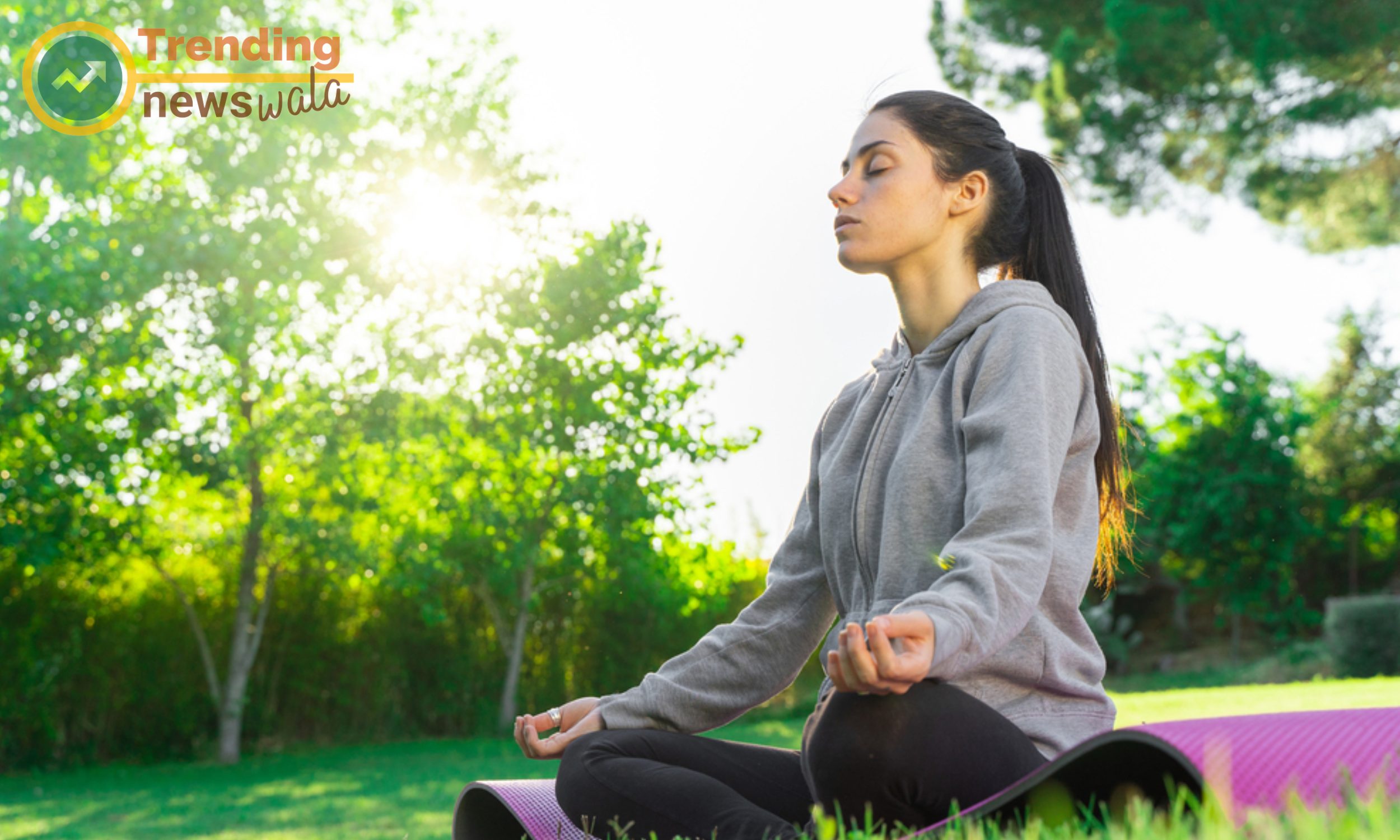
Relaxation is a key component of Hello Yoga. The practice often concludes with a guided relaxation or meditation, promoting a sense of inner calm and rejuvenation.
An emphasis on relaxation in yoga involves incorporating practices and techniques that promote a deep sense of calm, release tension, and facilitate overall well-being. Relaxation is not just the absence of effort; it's a skill that can be cultivated through intentional practices. Here are more details on the emphasis on relaxation in yoga:
Savasana (Corpse Pose): Savasana is a foundational relaxation pose where practitioners lie on their backs, allowing the body to rest and integrate the benefits of the practice. Emphasis is placed on conscious relaxation of each body part, letting go of tension, and surrendering to stillness.
Breath Awareness: Relaxation is often intertwined with breath awareness. Slow, deep breaths activate the parasympathetic nervous system, promoting a state of relaxation. Techniques like diaphragmatic breathing and extended exhalations contribute to a calm and centered mind.
Yoga Nidra: Yoga Nidra, also known as yogic sleep, is a guided meditation that induces a state of conscious relaxation. Practitioners lie down while the instructor leads them through a systematic journey of relaxation, promoting mental and emotional well-being.
Restorative Yoga: Restorative yoga involves supported poses with props like blankets and bolsters. The emphasis is on passive stretching and relaxation, allowing the body to release tension and promoting a meditative state.
Mindful Meditation: Mindful meditation practices, where practitioners focus their attention on the present moment, contribute to relaxation. Techniques such as mindfulness of breath or loving-kindness meditation foster a sense of calm and inner peace.
Guided Relaxation Scripts: Instructors may use guided relaxation scripts to lead practitioners through a series of mental imagery and relaxation cues. This can include visualizing serene landscapes, releasing tension from specific areas, and promoting a sense of tranquility.
Release of Physical Tension: Yoga poses, especially those designed to release tension in specific areas like the neck, shoulders, and hips, contribute to physical relaxation. Gentle stretches and movements help alleviate muscular tightness, fostering a sense of ease in the body.
Progressive Muscle Relaxation (PMR): PMR involves systematically tensing and then relaxing different muscle groups. This technique helps release physical tension, heightening awareness of the sensations associated with relaxation.
Breath-Centric Relaxation Techniques: Emphasizing the breath as a focal point during relaxation techniques enhances its effectiveness. Techniques like guided breath awareness or alternate nostril breathing promote a calm and centered state of mind.
Mental Relaxation:- Beyond physical relaxation, yoga places a strong emphasis on mental relaxation. Practices like mindfulness meditation and breath awareness help quiet the mind, reduce mental chatter, and create a peaceful internal environment.
Integration with Asanas:- Relaxation is seamlessly integrated into yoga poses. After performing active asanas, practitioners often transition into relaxation poses, allowing the body and mind to absorb the benefits of the practice.
Stress Reduction Benefits:- The emphasis on relaxation in yoga contributes to stress reduction. Regular practice helps individuals develop resilience to stressors and promotes an overall sense of well-being.
By placing an emphasis on relaxation, yoga becomes a holistic practice that nurtures not only physical fitness but also mental and emotional health. This focus on relaxation creates a space for practitioners to experience a profound sense of inner calm and balance in their lives.
Accessible Wellness
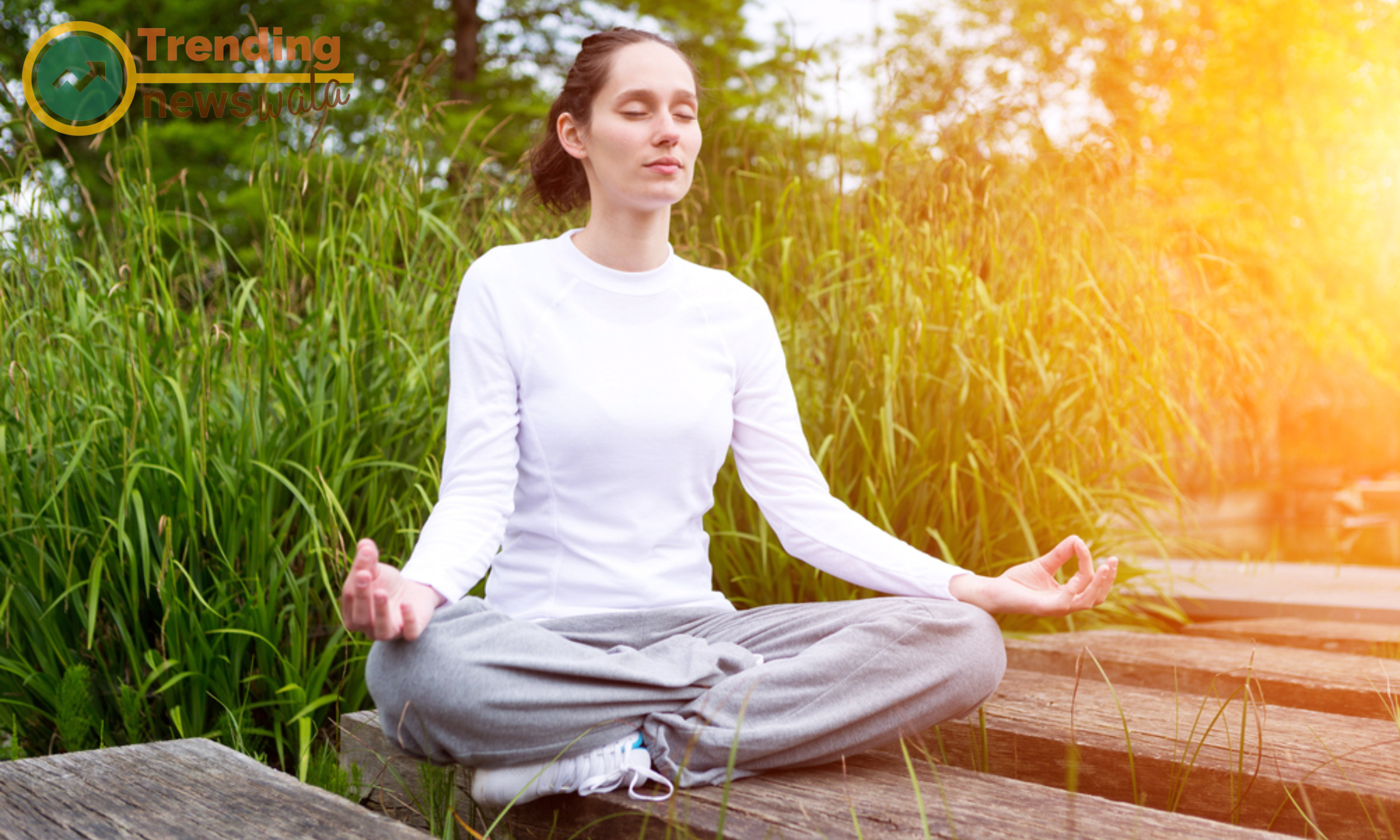
Hello Yoga offers an accessible pathway to wellness, making yoga approachable for everyone.
Accessible wellness refers to the approach of making health and well-being practices available and inclusive for individuals of all abilities, backgrounds, and circumstances. It involves creating an environment where everyone can participate in activities that promote physical, mental, and emotional well-being. Here are more details on accessible wellness:
Inclusive Physical Activities: Accessible wellness prioritizes physical activities that are inclusive and adaptable. This may involve providing modifications for different fitness levels or offering a variety of movement options to accommodate diverse abilities.
Adaptive Fitness Programs: Wellness programs should be adaptive and customizable to meet the needs of individuals with varying abilities or health conditions. This may include modifying exercises, providing alternative options, or offering adaptive equipment.
Mindful Movement Practices: Accessible wellness emphasizes mindful movement practices that promote flexibility, balance, and strength. Practices like yoga and tai chi are adaptable to different abilities and can be modified to suit individual needs.
Online Resources and Remote Support: Making wellness resources available online ensures accessibility for individuals who may face physical or geographical limitations. Remote support, such as virtual fitness classes or telehealth sessions, can reach a broader audience.
Financial Accessibility: Ensuring that wellness activities are financially accessible is crucial. This may involve offering low-cost or free classes, providing scholarships, or partnering with community organizations to remove financial barriers to well-being.
Cultural Competency: Accessible wellness takes into account cultural diversity and seeks to provide inclusive spaces that respect and celebrate different cultural backgrounds. Culturally competent wellness programs ensure that individuals feel welcomed and understood.
Accessible Facilities: Physical spaces for wellness activities should be designed with accessibility in mind. This includes ramps, elevators, and other accommodations for individuals with mobility challenges. Facilities should comply with accessibility standards to ensure everyone can participate.
Community Engagement: Creating a sense of community is essential for accessible wellness. This involves engaging with diverse communities, understanding their specific needs, and fostering a supportive and inclusive environment where everyone feels welcome.
Education and Awareness: Raising awareness about the importance of accessible wellness and providing educational resources helps dispel myths and misconceptions. Education can empower individuals to take charge of their well-being and encourage a culture of inclusivity.
Personalized Wellness Plans:- Accessible wellness acknowledges that one size does not fit all. Personalized wellness plans take into account individual preferences, abilities, and goals, ensuring that each person's well-being journey is unique and attainable.
Mental Health Inclusivity:- Wellness encompasses mental health, and accessible wellness recognizes the importance of mental well-being for everyone. Providing resources, support, and destigmatizing mental health challenges contribute to an inclusive approach to well-being.
Collaboration with Healthcare Providers:- Collaboration with healthcare providers helps bridge the gap between medical care and wellness. Accessible wellness programs can work in tandem with healthcare professionals to support individuals in managing their health and well-being.
By adopting an accessible wellness approach, individuals from all walks of life can engage in activities that promote a holistic sense of well-being. This inclusivity ensures that everyone, regardless of ability, background, or circumstance, has the opportunity to participate in and benefit from wellness practices.

What is Hello Yoga?
Hello Yoga is a simplified and beginner-friendly form of yoga designed to be accessible to all. It focuses on basic yoga principles, gentle movements, and mindfulness.
How is Hello Yoga different from traditional yoga?
Hello Yoga simplifies traditional yoga practices, making them more approachable for beginners. It emphasizes easy-to-follow movements and is designed to be inclusive for individuals of all fitness levels.
Who can practice Hello Yoga?
Hello Yoga is suitable for everyone, regardless of age, fitness level, or prior yoga experience. It is particularly welcoming to beginners and those looking for a gentle introduction to yoga.
What are the basic principles of Hello Yoga?
Hello Yoga incorporates basic yoga principles such as mindful breathing, gentle stretching, and simple poses. It focuses on creating a mind-body connection through accessible movements.
Do I need any prior experience to start Hello Yoga?
No prior yoga experience is required for Hello Yoga. It is designed for beginners and provides a comfortable starting point for those new to yoga.
What are the benefits of practicing Hello Yoga?
Hello Yoga offers various benefits, including improved flexibility, stress reduction, and enhanced mind-body awareness. It provides a gentle introduction to the physical and mental aspects of yoga.
How long are Hello Yoga sessions?
The duration of Hello Yoga sessions can vary, but they are typically shorter to accommodate beginners. Sessions may range from 15 to 30 minutes, making them easy to integrate into daily routines.
Are there specific poses in Hello Yoga?
Hello Yoga includes a selection of basic poses that focus on gentle stretching and relaxation. Poses may include simple standing postures, seated stretches, and easy floor poses.
Is Hello Yoga suitable for seniors or individuals with mobility issues?
Yes, Hello Yoga can be adapted to accommodate seniors or individuals with mobility challenges. The simplicity of the practice allows for modifications to ensure inclusivity for all.





